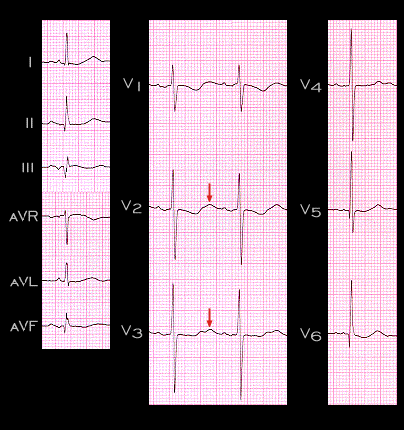
When digitalis and a type Ia or type III antiarrhythmic drug such as quinidine or dofetilide are administered concurrently, the ECG shows changes which reflect the electrophysiological effects of both drugs. These include ST segment depression, T wave inversion, QT prolongation and increased prominence of the U wave. These changes are illustrated in the tracing shown here. It is from a 43 year old patient with mitral valve disease who was receiving both digoxin and quinidine. Note the prominent U waves (arrow), and the depressed ST segment and inverted T waves in Leads V2 and V3. These changes resemble, and may be mistaken for, those caused by hypopotassemia.
